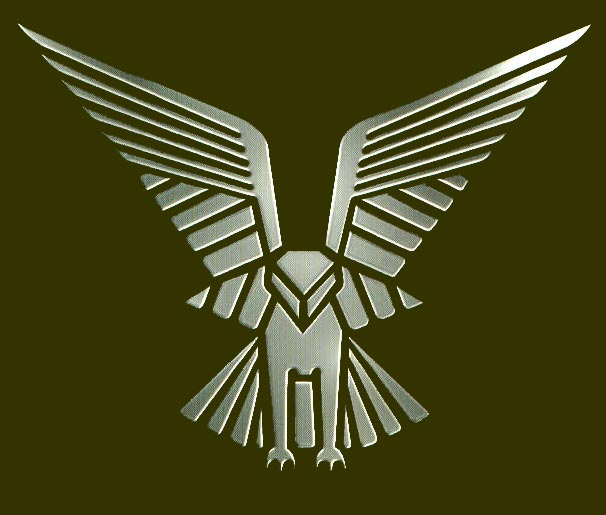




|
|
|
|
TRACKING: THE FOLLOW UP
The rotor blades clatter above, imposing an unnatural silence on your team-mates and giving you the chance for mental preparation. As a tracker, the success or failure of the operation will be on your shoulders. You think through the devious ploys you have encountered and remember the many mistakes you made in training. After what seems like an eternity the chopper banks. The side door slides to the rear, reveling the perfect tracking light of dawn. The 'point of last contact' On arrival at the PLC you will be under pressure to begin the follow up immediately. But without the correct preparation this can prove disastrous. If the track is 'very hot' (fresh), it may be feasible to follow up straight away if there are several tracking teams: while one team follows up, the other teams can gather relevant intelligence. But solo tracking without preparation is suicidal: do so only under what you judge to be exceptional circumstances. Basic pre-follow up preparations Time spent gathering information is never wasted. But remember that the weather will not wait for you: it is already at work, smoothing away the 'sign'. 1 Secure the vicinity of PLC The greatest technical problem you are likely to face is finding the trail. Normally by the time you arrive, the area has been flattened by the fleet of 'friendly forces'! As soon as you get there, the PLC area and its surroundings should be made off-limits to all but the trackers and there cover groups. 2
Set up an operational HQ
Commanders using tracking teams should establish a forward support HQ, near the
area of operation to reduce transportation delays. Apart from normal military
considerations, the HQ must provide the following tracker support: 3
Gather
intelligence
The usual difficulty is not in finding sign, but in distinguishing your target’s
sign from normal disturbances. Even in remote areas paths are used regularly by
the local population. The more you know about the target, the easier this task
will be.
Develop close liaison with the Intelligence Officer. He will be able to give you
valuable information, such as what the enemy ration wrappers look like, what
footwear they use, and so on. When the operation is over you will hold a debrief
to enhance the picture of the enemy.
The I0’s information is invaluable, but more up-to-date information can be
obtained by interviewing the troops or civilians who have had the most recent
contact with the target/s. Take care: if you ask leading questions you run the
risk of influencing the subject’s reply. If you ask a village about jungle
terrorists, for example, you should ask: “What was their footwear?” You
are likely to receive an accurate answer, ranging from “none” to “jungle
boots”. But if you ask, “What boots were they wearing? ‘you The fast ‘follow
up’
As soon as possible, organize a search for the trail. If you are the only
tracker, you will have to follow the trail faster than it was made. Most teams
begin by dividing the tasks: one or two teams may cut for sign in a circle
around the PLC, while others might cut along the edges of paths, roads or rivers
in the area.
Once the trail has been found, the clock really begins to tick. With the general
direction of the target’s movement identified, the search teams can
concentrate their effort in a narrow corridor. The team that has the trail
‘tapes’ their start point and begins following up. Meanwhile, the other teams begin to cut across the search corridor some distance ahead of the follow-up team. If one of these teams discovers the trail they begin following up, and the first follow-up team leap frogs past them to ‘cut ahead’. In this way the distance between trackers and target is reduced very rapidly. Live
tracking
As you round the bend in the track, something catches your eye: there is some
darkness around the base of a rock, perhaps, showing that it has been moved.
Carefully examining the surrounding area, you find the trail. There is no room
for mistakes now. First of all, radio in your position and the details of the
trail as you see it:
Next, mark the trail using colored tape so that another tracker team will know
the trail has been discovered, or so that you can easily resume tracking the
next day.
Estimate the age of the trail, and keeping an eye on this factor: it will enable
you to judge whether or not you are gaining ground. Your life may well hang on
this thin thread of data.
From now on you must
be alert to all that is going on around you. Make sure the cover group
understand that they are your eyes and ears while you are concentrating on the
trail. Be as silent as possible, use hand signals to communicate, and at all
costs keep the radio from bursting out or crackling. Tracking is tiring, so
it’s not a bad idea to
take a rest ever 10 minutes or, better still, rotate point duty with another
tracker.
As you close the distance, make sure to keep your cover group informed,
otherwise they may not be alert, which will put all your lives at risk. Tracking
is like reeling in a fish: When the operation is over there will be a debrief: You may be able to shed some light on the enemy’s SOP, and the tracking team will hopefully be allowed some rest. Expect no glory for tracking! Successful tracking
It
is not enough just to follow the clues left behind by the target. you must
interpret those signs to gain an understanding of the targets movements so that
you can predict his movements or his aim. If the target is expecting to be tracked, he may be planning to ambush you or lay a booby-trap. Only your tracking skill can help you here. Caution, careful interpretation and a steady tracking pace are your allies: tiredness, carelessly taking signs at face value, and undue haste along the trail can be fatal enemies.
As
you follow the trail, pay attention to all types of sign, not just the tracks.
Stop to look around and listen every few tracking
stick to help you, and make sure that the track has not been obliterated because
of freak conditions. If you still cannot find the next sign, check left or right
of the trail. If that doesn’t work, read the pattern of the last few tracks:
do they indicate any change in pace or
paces:
trackers are frequently shot because they spend too long looking at the ground!
By looking up and studying the direction in which the target is moving you will
gain a better appreciation of why the tracks are being made the way they are. Try to pay equal attention to the ground on each side of the trail: you may detect sign that indicates the target is aware of your presence. Suspect everything. If you come across evidence such as dropped or discarded equipment, treat it as a probable booby-trap. Try to avoid destroying the ‘sign’ you have just followed, and never pass beyond a sign until you can see the next sign. If you cannot find the next track, pay careful attention to the last visible sign: the lines of force should indicate where a track lies. Use your direction?
The
last resort before ‘cutting ahead’ is to check near and far from
the last sign. If you are using a tracking stick and are positioned to make the
best use of available light, you will not often lose the trail. Remember: the
key to successful tracking is practice. Other
uses of trackers
Trackers have a unique balance of skills and they can prove ideal scouts for
raiding parties and long-range recce patrols. If they’re good shots they can
be first-class snipers. In a training capacity, trackers will prove very useful in highlighting mistakes in camouflage and sloppy bushcraft, generally uplifting a whole unit’s ability. (END) ***NOTE*** Source for this was obtained from The Handbook of the S.A.S.-How Professionals Fight and Win, by Jon E. Lewis.
|
|
|